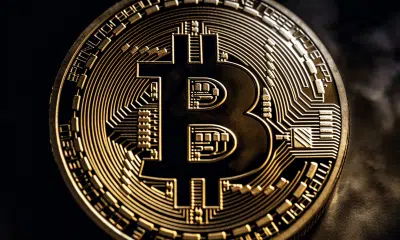Bitcoin and the crypto-market have what DeFi doesn’t!

If one were to take a survey, chances are that most would agree that the last few weeks and months have been pretty good for the cryptocurrency market. Bitcoin, and with it, the rest of the crypto-market, seem to be on the up, with the memories of Black Thursday well behind it. However, that’s not all as DeFi seems to have emerged as 2020’s hot property, with the market buzzing with its growth and potential.
However, some have sought to temper this optimism, with these people claiming that the crypto-market, like Nasdaq, Oil, and Gold, have been artificially bullish owing to “loose fiscal and monetary policies.” DeFi sector’s growth, according to them, is also clouding the actual bullishness of the market.
Straying from the beaten track
Is that the case though? Well, the issue was addressed by Arca’s Chief Investment Officer Jeff Dorman in a recent newsletter where he looked into the best-performing crypto-assets of the week. He noted that most of the cryptos on the list were either mid-cap or small-cap assets, and none of them were Bitcoin or Ethereum. In fact, the two giants of the industry were noting 7-day gains of just 2.8% and 9.6%, respectively, at the time of writing.
Another interesting finding was that most of these assets on the list were DeFi tokens. This implied that not only are these tokens’ gains in market-value driven solely by increased usage across the board, but such growth is also independent of what one would traditionally expect from the DeFi sector.
The latter, especially, is a crucial development as for long, the prevailing perception has been that DeFi’s growth is linked to Ether’s valuation. That is a mistaken belief to hold, especially since while Ethereum remains the base layer for DeFi, Ether’s primary functionality is to act just as a medium to pay gas prices. Even as a form of collateral on DeFi, ETH is being slowly squeezed out by the emergence of native DeFi tokens (Synthetix’s SNX) and stablecoins (USDC, DAI).
However, for all of DeFi’s growth over the past few months, has it translated into the growth of the larger crypto-market? Well, that’s a tricky question to ask, but, perhaps a good place to start is market cap. Over the week that saw DeFi tokens completely outperform the market’s traditional crypto-assets, the top performers added just $3.7 billion to the cumulative market cap. To put that into context, Apple alone has gained $1 trillion in market cap since March.
Now, drawing a comparison between Apple and the cryptocurrency market would ideally be a folly, but those figures are “paltry,” at best, according to Dorman.
Fundamentally speaking
The DeFi sector has grown, and it has grown exponentially. That is true. But in the eyes of many, such growth has come out of nowhere and isn’t based on a foundation built by solid fundamentals. This is especially true now since many of these projects are moving independently of stronger assets they would normally share a huge correlation with. Fundamentals have changed, which is why perhaps, an argument can be made that the DeFi sector doesn’t share the level of maturity the rest of the crypto-market does.
Take Bitcoin, for instance. According to IntoTheBlock, the In-Out Money Around the Price (IOMAP) indicator revealed that BTC has a strong support level at the range of $11,335.44 to $11,683, a level where 1.75 million addresses bought 1.09 million BTC. This means that were Bitcoin to fall from its press time trading price of $11,907, it has a strong zone to fall back on before it recoups.
Now, consider that example and juxtapose it against the case of Compound’s COMP token. Over the past two days alone, the TVL locked in Compound has fallen from over $910M to under $750M. That’s huge in terms of percentage losses, but it also comes on the back of some strikingly volatile movement. COMP’s all-time high of $372.79 came just 3 days after its all-time low of $61. 32.
Over the course of those 3 days, COMP surged incredibly, but it was backed by very thin trading volume (No more than $11M), which is the reason why many are claiming that in DeFi, expectations don’t justify the prices.
That’s not all. Yield farming protocol YAM saw its market cap plunge to $0 from $60M in 35 minutes owing to its inability to fix a bug in its unaudited protocol.
Not interesting enough?
Further, what is another impediment to the DeFi sector is that investors, especially institutional, aren’t interested in it yet, something that can be explained by the fact that most crypto-indices these investors refer to account for only large-cap cryptos, let alone DeFi tokens. Finally, according to Dorman, many of the market’s investors have been unable to process DeFi’s movement objectively because of the liquidity and volatility.
Ergo, it can be argued that Bitcoin and the mainstream cryptocurrency market remain fundamentally strong and yes, are bullish. However, the same cannot be said for DeFi because it lacks the level of maturity the rest of the market has honed over the past decade. And because it falls short in that respect, its bullishness is not necessarily a reflection of how the rest of the market is doing.






